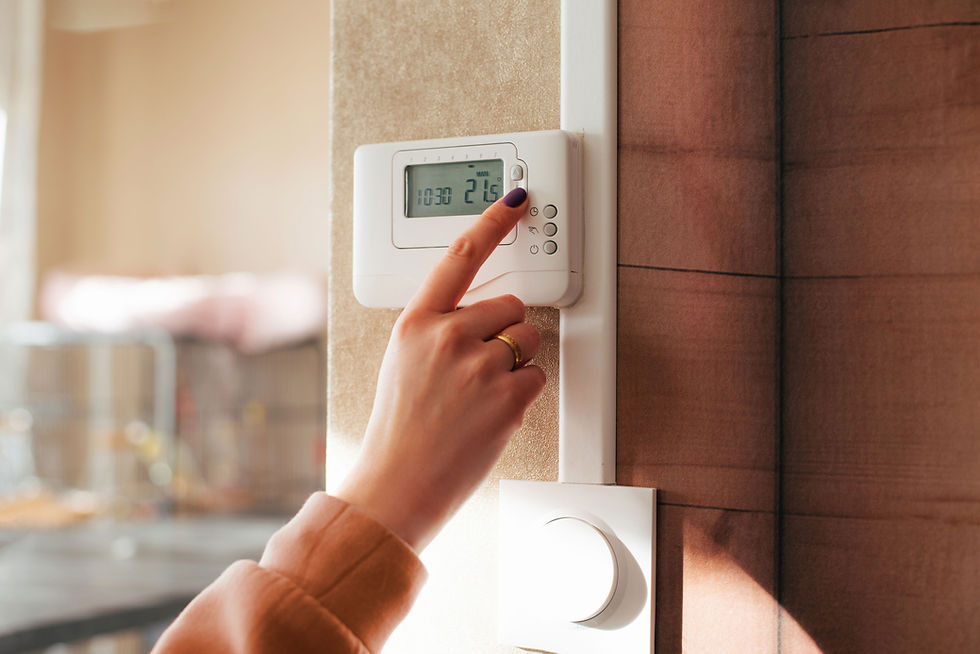Frostbite!
- Paula Ballak

- Jan 10
- 4 min read
I had thought about writing a piece on Frostbite in December - but with the mild temperatures and many days without snow, it seemed unnecessary. In the last week we've seen (and felt!) temperatures as low as -20C in the townships, so I thought I'd better write this piece now!
Frostbite is freezing of the skin and tissues below the skin. It occurs when a person is exposed to freezing temperatures [ 0°C ] or lower for too long.
How severe the frostbite is depends on how long the person was exposed to cold, the temperature, the wind chill, and the humidity. Frostbite is most likely to occur on the feet, hands, ears, nose, and face.
Practitioners rate frostbite by degree of severity:
First-degree frostbite
First-degree frostbite freezes part of the outer layer of skin. Symptoms include:
Tingling, stinging, or burning pain.
Red skin or, less often, white, yellow, or pink-blue skin.
Mild swelling.
No blisters.
Second-degree frostbite
Second-degree frostbite is freezing of all layers of the skin. Symptoms include:
Numbness followed by aching and throbbing pain.
Hard and frozen outer skin.
Blisters filled with clear or milky fluid. Blisters form within 6 to 24 hours.
Red, swollen skin around blisters.
Third-degree frostbite
Third-degree frostbite is freezing of deep layers of skin and tissues below the skin. Symptoms include:
White, pink-purple, or blue-grey skin.
Hard and frozen skin that "feels like a block of wood."
Blisters that look like they are filled with blood.
Numbness followed by burning, throbbing, or shooting pain.
Fourth-degree frostbite
Fourth-degree frostbite is freezing of muscles, tendons, and bones. Symptoms include:
Patches of red or blue skin that turn dry, black, rubbery.
Little or no swelling.
Blisters that may appear as small blood spots under the skin.
Deep, aching joint pain.
Pain may be severe as the frostbitten skin rewarms. Swelling and blisters are common after rewarming.

Although Frostbite is not as common as it once was, it still does affect people. You can get frostbite in 30 minutes or less when the wind chill is -26 C or lower. If you live or work in cold climates, try to limit your time outdoors to prevent skin damage.
What can I expect if I have frostbite?
If you think you have frostbite, go inside and contact a healthcare provider or visit the emergency room.
The amount of time it takes after treatment for your frostbitten skin to feel better depends on which stage of frostbite you were in and for how long. If you have very mild frostnip, you may heal within a few days to a few weeks. Second-stage frostbite can take up to six months for your skin to heal. You may experience skin scabbing and skin discoloration throughout the healing process. The third and most severe stage of frostbite can cause permanent skin damage. You may need surgery to repair this type of skin damage. A healthcare provider can give you the best timeline of when you can expect your skin to heal based on the severity of your symptoms.
Complications from frostbite are possible. When frostbite continues past the first stage and it can have long-term side effects including:
Nerve damage (neuropathy).
Sweating heavily.
Being more sensitive to the cold.
Frostbite arthritis, stiffness in your hands and feet.
Skin discoloration.
Nail damage or nail loss.
You’re also more likely to get frostbitten again once it’s happened.
Severe complications of frostbite can include:
A secondary infection.
Damage to your tendons, muscles and bones.
When should I see a healthcare provider?
If you think you have frostbite, don’t wait to seek help. Immediately contact a healthcare provider or visit the emergency room. Acting quickly and removing yourself from freezing temperatures can prevent severe complications.
How can I prevent frostbite?
Here are a few tips for preventing frostbite:
Avoid going outside for long periods: When it’s freezing out, try to stay indoors.
Limit your trips: If you do have to go outside, try to limit it to 10 or 15 minutes before going back inside for a few hours.
Dress warmly before going out: Dress appropriately whenever you know you’re going to be in cold temperatures. Layer your clothing. Wear warm socks, a thick hat, mittens and a heavy scarf over your face, ears and mouth.
Wear windproof and waterproof clothing: Wear clothes designed to keep the weather out and to keep your head and neck area warm.
Don’t cut off your circulation: Make sure your boots and clothes aren’t too tight. This can cause poor circulation. Keep moving to maintain a good blood flow.
When traveling in cold weather, always bring your phone with you. It’s your lifeline to medical help if you have an accident or get stuck on the road. Finally, pack a car emergency kit in your vehicle. That way, you’re prepared with first aid, food and water, gloves, boots and blankets whenever the weather turns bad.







Comments